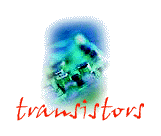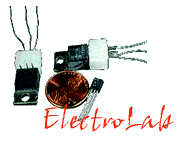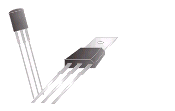






![]()
 As explained in the previous section, the working of transistors is
based on two different principles viz.- transfer of current from one circuit to another,
or controlling the current by means of a second voltage.While the earliest transistor was
called Point Contact Transistor, in practice, and also from the educational
perspective, three important transistors may be considered -
As explained in the previous section, the working of transistors is
based on two different principles viz.- transfer of current from one circuit to another,
or controlling the current by means of a second voltage.While the earliest transistor was
called Point Contact Transistor, in practice, and also from the educational
perspective, three important transistors may be considered -
These names, while sounding like some robots in a "Doctor Who" sci-fi novel, are in fact pretty simple, especially to understand and remember the functioning of the transistors.
The name Point Contact Transistor simply means that the transistor works by the effect obtained through contact of points, which is exactly what it is, as you will learn in its pages.
The Bipolar Junction Transistor - BJT - is quite self-explanatory. It means that the transistor consists of oppositely charged regions (p- or n-regions) joined pole to pole.
The other two transistors are based upon the field effect theory. This theory is none but the one discussed above i.e. use of a second voltage to control a current.
The Junction FET is a transistor that includes the oppositely charged regions joined together, while the Metal Oxide Semiconductor FET makes use of the oxide of the semiconductor (eg. SiO2) in order to administer the second voltage.
To carry on with the details of any one transistor, click on its name.